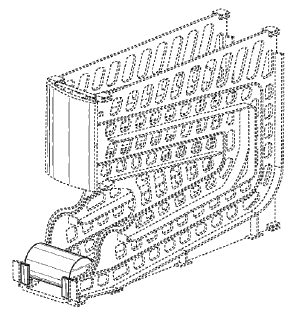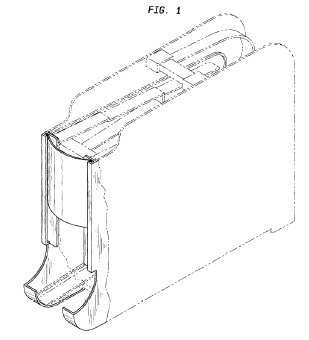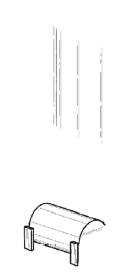It is said that Andy Warhol painted the famous Campbell’s Soup Cans after an art gallery proprietor told him to paint “something you see every day and something that everybody would recognize.” While Mr. Warhol’s Campbell’s Soup Can is now obviously quintessential pop art, so too are the grocery store displays used to sell those soup cans according to the U.S. Court of Appeals for the Federal Circuit. Last week, the Court clarified how the objective indicia of nonobviousness should be applied to successful and praise-worthy soup can displays. Campbell Soup Co. v. Gamon Plus, Inc., Nos. 2020-2344, 2021-1019, 2021 U.S. App. LEXIS 24760 (Fed. Cir. Aug. 19, 2021).
Campbell Soup Company (“Campbell”) and its affiliates were accused of infringing two of Gamon Plus, Inc.’s (“Gamon”) design patents for a vertical gravity feed dispenser. For years Campbell used Gamon’s product, called the iQ Maximizer, praised it publicly, and attributed to it Cambell’s success in the market. However, Campbell changed to a different supplier of gravity feed dispensers which prompted Gamon to bring suit for patent infringement. Campbell responded by petitioning for inter partes reviews of the two design patents. A comparison of the claimed design and the prior art is depicted below. The Patent Trial and Appeal Board (the “Board”) ultimately determined that Campbell failed to prove unpatentability because, although the prior art has the same overall visual appearance as the claimed designs, this was outweighed by objective indicia of nonobviousness. Id. at 5-7.

The claimed design.

The prior art.
The Board’s determinations of nonobviousness were premised on its finding that the iQ Maximizer—the commercial embodiment of the claimed design—was “coextensive” with the claimed design and that a presumption of a nexus should apply to the evidence of commercial success and industry praise. Id. at 7. However, the Federal Circuit saw things differently and reminded the Board that being “coextensive” means that the commercial embodiment as a whole “is the invention disclosed and claimed.” Id. at 10 (citing Fox Factory, Inc. v. SRAM, LLC, 944 F.3d 1366, 1373 (Fed. Cir. 2019)). Thus any differences between the commercial embodiment and the claimed design are critical to this determination. Accordingly, any unclaimed features of the design must be “nothing more than additional insignificant features.” Id.
As the Court highlighted and as depicted below, the differences between what is claimed in the design (shown in solid lines) and what is unclaimed (shown in dashed lines) is very significant in this case.

The claimed design.

The claimed design with unclaimed elements removed.
According to the Court, the Board erred by analyzing whether the unclaimed features were insignificant to the “ornamental design.” Id. at 11. Ornamentality is typically central to the analysis of design patents. But the “coextensiveness” test—which does not distinguish between design patents and utility patents—asks “whether the unclaimed features are ‘insignificant,’ period.” Id. As shown above, the claimed design covers only a small portion of the entire product: the label area, cylindrical object, and stops. However, the entire rearward rails and side portions are unclaimed. It was not disputed that those other structures are significant because they facilitate the loading and dispensing of soup cans. Id. After applying the correct standard, the Court held that the commercial embodiment is not coextensive with the claimed design. Id. at 11-12.
In its decision, the Court recognized the difficulty of applying its standard to design patents. Because design patents cannot claim significant functional features, a design patent will always have some significant unclaimed features when compared to its functional commercial embodiment. The Court explained in a footnote that it is “hard to envision a commercial product that lacks any significant functional features such that it could be coextensive with a design patent claim.” Id. at FN1. Thus, while the Court stated that it does “not go so far as to hold that the presumption of nexus can never apply in design patent cases,” it is very unlikely that such a presumption can reasonably be met. See id.






 />i
/>i

